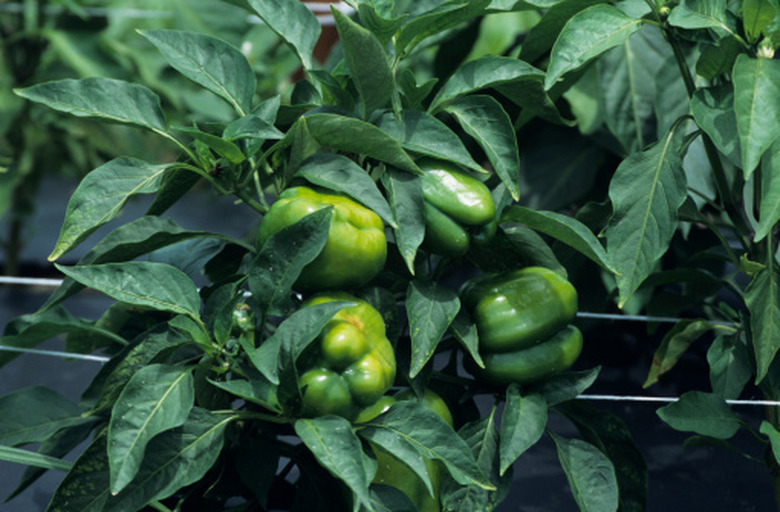Why Do Pepper Plant Stems Turn Black?
We may receive a commission on purchases made from links.
Why do pepper plant stems turn black? It's a common question among gardeners since the plants are so common. Annual peppers (Capsicum spp.) are the second most popular vegetables, after tomatoes, that people grow in their vegetable gardens. Peppers are easy to raise and they produce a lot of fruit. They're also not bothered by many insect pests. However, they are susceptible to some diseases that can cause their stems to turn black.
Tip
Pepper plants can have a black stem due to a variety of diseases, including phytophthora, sclerotinia, southern blight and fusarium.
Phytophthora in Pepper Plants
Phytophthora in Pepper Plants
The most common symptom of phytophthora blight is stem rot. Wet, swollen, dark brown or black tissue appears on the stem and may encircle it. If it does, the plant wilts suddenly, without turning yellow, because no water or nutrients are able to move up past the girdling.
Sometimes a fungal growth can be seen, especially if the weather is wet. Symptoms are less common on the leaves, but include the appearance of dark green water-soaked lesions that turn light brown when they dry out. Cankers may also form on the branches. Abnormal tissue may appear on the fruit, along with a fungal growth and roots can rot.
Phytophthora Control Measures
Phytophthora Control Measures
Plant peppers on well-drained soil, and on raised beds, to help prevent phytophthora. Some cultivars of pepper like Emerald Isle, Paladin and Rainger are resistant to this disease. Don't plant peppers on soil where tomatoes, potatoes, peppers, eggplant or gourds have been planted the previous three years. Avoid overwatering, or watering plants from overhead, in order to keep the leaves as dry as possible. Mulch with straw to keep soil from touching low-hanging fruit or from splashing onto higher fruit. Remove diseased plants as soon as symptoms appear, and burn them.
Sclerotinia or Southern Blight
Sclerotinia or Southern Blight
Sclerotinia stem rot and southern blight are fungal diseases that cause similar symptoms, including black or dark brown lesions that form on the stem near the soil line. The lesions can completely encircle the stem, causing the plant to wilt and die. White fungal threads grow up the stem surface and leaf petioles may also be infected. In addition, fruit may rot.
Sclerotinia or Southern Blight Control
Sclerotinia or Southern Blight Control
Sclerotinia stem rot and Southern blight are difficult to control with chemicals or fumigation. The best way to control these fungal diseases is by rotating crops. Don't plant peppers in the same spot where other peppers, potatoes, tomatoes, or eggplant have grown the previous three years. In addition, you should avoid injuring plant stems since the fungi can enter through wounds. Using black plastic mulch or organic mulch will also help by keeping plants out of contact with the soil.
Fusarium in Pepper Plants
Fusarium in Pepper Plants
Symptoms of fusarium include soft black cankers on the stem. As the disease progresses, the cankers may completely encircle the stem. Small, light orange structures, which are fungal fruiting bodies, form on the cankers, and pinkish-white fungal threads may also appear. Fruit turns black and mushy and leaves can look mottled.
Fusarium Control Measures
Fusarium Control Measures
Prune and remove diseased plant parts with pruning shears to keep the disease from spreading to healthy plants. Bag the removed parts in plastic and discard them, along with one or two plants on each side of the infected one. Disinfect pruning tools each time they touch a diseased plant. Wear disposable gloves when working with infected plants and discard them when you're finished. Clean soil off shoes when walking in infected areas, and disinfect the bottoms of your shoes. Avoid watering plants from overhead, and ensure plants are properly ventilated by not crowding them.
